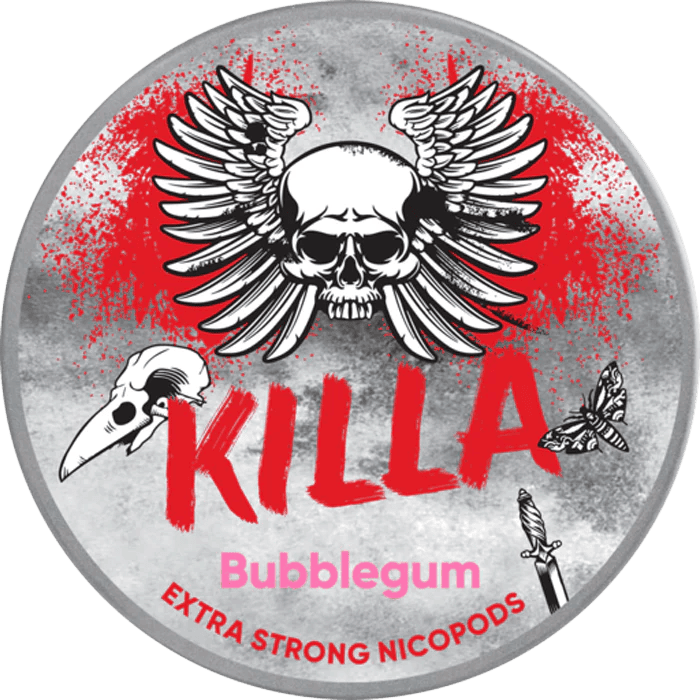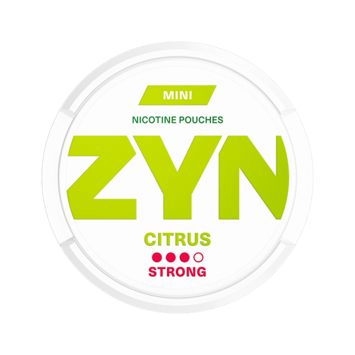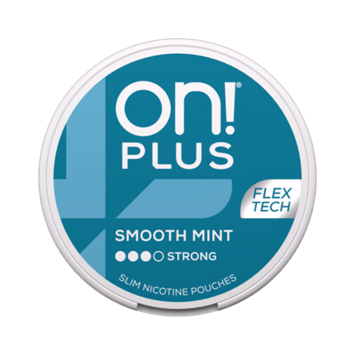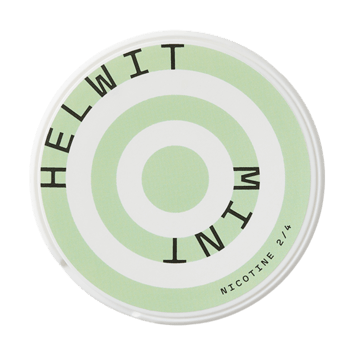What are nicotine pouches used for?
Philip Plainstein

Nicotine pouches are small, discreet products designed to provide a smokeless and spitless nicotine experience. These innovative pouches contain nicotine along with flavourings, sweeteners, and plant-based fibres, making them a popular choice for those seeking alternatives to traditional tobacco products.
Brands such as On!, Zyn, and Velo have introduced these pouches as a safer option for consumers. They are placed between the gum and lip, allowing for gradual nicotine absorption. Available in various strengths, nicotine pouches cater to different user preferences and needs.
Although not FDA-approved as nicotine replacement therapies, these pouches offer several advantages. They eliminate the need for combustion, reducing exposure to harmful toxins found in traditional smoking. However, it’s important to be aware of potential risks, including nicotine addiction and gum irritation.
With their convenient design and diverse flavour options, nicotine pouches are gaining traction among both smokers and those exploring alternative nicotine solutions. This section provides a comprehensive introduction to nicotine pouches, setting the stage for a deeper understanding of their role in modern nicotine use.
Understanding Nicotine Pouches
Nicotine pouches offer a modern, tobacco-free alternative designed for discreet use. These small sachets are placed between the gum and lip, allowing nicotine to be absorbed through the oral mucosa. Unlike traditional tobacco products, they contain no tobacco leaf, making them a unique option for those seeking alternatives to smoking.
Definition and Purpose
The primary purpose of nicotine pouches is to deliver nicotine without the need for combustion. They are designed for oral use, providing a controlled release of nicotine. This method eliminates the need for spitting, making them a convenient choice for many users.
How They Differ from Traditional Tobacco Products
One of the key differences is the absence of tobacco. Nicotine pouches use a non-tobacco base, which sets them apart from products like snus or chewing tobacco. Additionally, they often feature clear labeling of nicotine strength, allowing users to make informed choices. The effect on the gum and overall oral sensation is also different, as they are designed to minimize irritation while providing a subtle flavour profile.
These products appeal to individuals who prefer a discreet and modern design. The lack of smoke or vapour makes them ideal for use in various settings. While they share some similarities with traditional tobacco products, their innovative approach to nicotine delivery sets them apart in the market.
How to Use Nicotine Pouches Safely
Using nicotine pouches safely involves understanding proper technique and being aware of potential health considerations. This section will guide you through the correct method of using these products to minimize risks and maximize benefits.
Proper Usage Technique
To use nicotine pouches correctly, place one pouch between your gum and lip. This allows the nicotine to absorb gradually through your mouth tissue. Avoid chewing or swallowing the pouch, as this can lead to improper absorption and potential discomfort.
The pouch should be left in place for up to an hour. After this time, dispose of it responsibly. For more detailed instructions, you can visit this guide on proper usage techniques.
| Aspect | Details | Key Tips |
|---|---|---|
| Placement | Between gum and lip | Ensure it’s snug and comfortable |
| Duration | Up to 1 hour | Do not exceed recommended time |
| Post-Use | Dispose responsibly | Do not swallow or chew |
Important Health Considerations
While nicotine pouches offer a smokeless alternative to traditional tobacco products, they are not without risks. Potential side effects include mouth irritation, gum soreness, or nausea. If you experience any of these symptoms, consider reducing the frequency or strength of use.
It’s crucial to consult a healthcare professional before starting nicotine pouches, especially if you’re a heavy smoker or new to nicotine products. They can provide personalized advice to mitigate risks and monitor side effects. For information on where to place the pouches, visit this resource.
Remember, safety precautions are essential to ensure a positive experience. Always follow guidelines and seek medical advice if necessary.
Exploring what are nicotine pouches used for
Nicotine pouches are gaining attention as a harm reduction tool and potential aid in smoking cessation. Their popularity, particularly among young people, is rising as they seek alternatives to vaping and traditional cigarettes.
Recent datum highlights their growing acceptance. Sales have surged, with figures increasing from 126.06 million units in late 2019 to 808.14 million in early 2022. This trend suggests a significant shift in nicotine product preferences, especially among those looking for a discrete way to consume nicotine without vaping.
Young persons are particularly drawn to these products, with 1.8% of middle and high school students using them in 2024. This rise raises questions about their long-term health impacts, despite their appeal as a safer alternative to smoking.
For those considering nicotine pouches, understanding usage patterns is crucial. The frequency and strength of use can vary, so it’s advisable to consult resources like this guide to determine the right approach.
While they offer a novel way to consume nicotine, their long-term effects remain under scrutiny. As more datum emerges, their role in harm reduction and public health will become clearer.
Nicotine Pouch Ingredients and Composition
Understanding the components of nicotine pouches is essential for grasping their function and appeal. These products are primarily made of water and microcrystalline cellulose, forming a non-tobacco base. This composition sets them apart from traditional tobacco products, offering a unique alternative for users.
Non-Tobacco Base and Fillers
The foundation of nicotine pouches is water and microcrystalline cellulose, which provides a stable structure. These fillers ensure a slow release of nicotine, enhancing the user experience without the need for tobacco. The absence of tobacco reduces certain health risks associated with traditional products.
Flavours, Sweeteners and Nicotine Strength
Food-grade flavourings and artificial sweeteners are added to improve taste without contributing to dental issues. Nicotine strength varies, typically ranging from 1 mg to 10 mg per pouch, with some brands offering higher concentrations. The choice of strength influences both the intensity of the experience and the potential risk of addiction.
| Component | Description | Role |
|---|---|---|
| Water | Primary solvent | Facilitates nicotine absorption |
| Microcrystalline Cellulose | Non-tobacco filler | Provides structure and gradual release |
| Nicotine | Varying strengths | Delivers desired effect |
| Flavourings | Food-grade varieties | Enhances taste |
| Sweeteners | Artificial types | Mask bitterness |
According to a 2025 study, nicotine uptake from pouches increases proportionally with dose, similar to Swedish snus, highlighting their effectiveness in delivery.
Correct placement between the lip and gum is crucial for effective absorption. This composition makes nicotine pouches a distinct alternative to traditional tobacco products, appealing to those seeking a modern, convenient option.
Health Effects and Potential Side Effects
While nicotine pouches are considered a safer alternative to smoking, they are not without health risks. Research indicates that these products can cause several side effects, particularly in the oral region.
Oral Health Impacts
The placement of nicotine pouches between the gum and lip can lead to gum irritation and mouth soreness. Some users have reported mouth ulcers and gum recession where the pouch is placed. These issues are well-documented in recent studies, which highlight the importance of proper usage to minimize such effects.
Risks of Nicotine Addiction and Withdrawal
Nicotine pouches contain varying levels of nicotine, which can lead to addiction. Withdrawal symptoms, such as irritability and anxiety, may occur when attempting to quit. Comparisons with snus and other nicotine replacement therapies show similar risks, underscoring the need for cautious use.
Recent studies have shown that the popularity of nicotine pouches has sparked further research into their long-term side effects. As of 2023, sales have surged, indicating a significant shift in consumer preferences. However, the lack of comprehensive data on their long-term health impacts remains a concern.
It is crucial to be aware of both immediate and future health risks when using these products. Consulting healthcare professionals and following usage guidelines can help mitigate potential side effects and ensure a safer experience.
Nicotine Pouches in Smoking Cessation and Harm Reduction
Nicotine pouches have emerged as a novel approach in the realm of smoking cessation and harm reduction strategies. While they are not FDA-approved as traditional nicotine replacement therapies (NRTs), they offer a unique alternative for those seeking to reduce their reliance on combustible tobacco products.
Comparing with Nicotine Replacement Therapies
Nicotine pouches differ from conventional NRTs like gum and lozenges in their delivery method. They provide a discreet and straightforward way to manage cravings without the need for chewing or sucking. This makes them particularly appealing to individuals who prefer a more subtle approach to nicotine intake.
| Product Type | Advantages | Disadvantages |
|---|---|---|
| Nicotine Pouches | Discreet, easy to use, and available in various flavours | Not FDA-approved as NRTs; potential for nicotine addiction |
| Nicotine Gum | Fast-acting and portable | Can cause jaw discomfort; requires frequent chewing |
| E-Cigarettes | Mimic smoking experience; effective for cessation | Regulatory concerns; potential health risks |
Studies suggest that nicotine pouches can deliver nicotine levels comparable to other smokeless products, making them a viable option for those trying to quit smoking. However, their long-term health impacts and effectiveness in cessation plans require further research. As more data emerges, their role in harm reduction will become clearer.
Final Reflections on Nicotine Pouch Usage
As we conclude our exploration of nicotine pouches, it’s clear that while they offer a modern alternative to traditional smoking, their use comes with both benefits and risks. Experts suggest that these products can serve as a harm reduction tool, particularly for adult smokers seeking to reduce their tobacco consumption. However, concerns about long-term health impacts and nicotine addiction remain prominent.
The ingredients in nicotine pouches, such as flavourings and sweeteners, play a significant role in their appeal. However, the lack of transparency in some products raises questions about their safety. Strength levels vary widely, which can influence both the effectiveness and the risk of addiction. For those considering these products, it’s crucial to weigh their potential benefits against the risks.
Current regulations in the UK do not classify nicotine pouches under the same rules as e-cigarettes or tobacco products, which has sparked debates about their oversight. Expert opinions emphasize the need for further research to understand their long-term effects fully. In the meantime, consulting healthcare professionals is advisable to ensure safe and appropriate use.
In summary, nicotine pouches present a unique opportunity for alternative smoking methods, but they should not be viewed as entirely risk-free. By prioritizing informed choices and monitoring ingredient transparency, users can make decisions that align with their health goals and lifestyle preferences.









